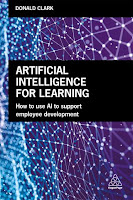Not often you see schools having resolved the ‘technology’ issue. It is usually a contentious issue, often tribal, defensive, even hostile. Despite the endless claims on workload, the refusal to do what every other area of human endeavour does, use technology to reduce it, education often seems to wilfully avoid the issue. Schools have, in the past, been quite independent, creating their own websites, buying and building their own technology, reducing much of it to a cottage industry. It was impressive to find a school network that took technology as seriously as Curro, in South Africa. They had invited me to give a keynote on AI for Learning, based on my book and experience but I hung around as the teacher sessions were so damn good. This is what I learnt, as I think it is a recipe for success.
Centralised service

Ecosystem of technology
There was a real sense of technology as a force for good in teaching and learning. With champions out in the schools, supported by expertise at the centre, they understood the balance between innovation and implementation. This allows experimentation and constructive feedback. I got none of the tired scepticism I’ve seen elsewhere. Rather than plump for one system, they have built an ecosystem of technologies accepted by everyone. Careful choices, careful implementation and the sense that different tech meets different needs.
Emphasis on CPD
Webinars and other training is distributed, a term in advance, with practical training in hte technology, news on what’s new and other relevant services for teachers. It is clearly a dynamic service designed to bring teachers with them in the change management process. I was giving a talk as part of that process. The day’s activities were under the banner of ‘Imagining 2022’. It’s hard enough to Imagine what any year will bring these days but it was clear that this was a learning organisation, willing to learn from their mistakes and make the effort to plan forward. It was CPD organised by teachers for teachers and not scared of introducing outside ideas and speakers. There was no sense of being a protected, inward-looking process. You got that sense of CPD being in the hands of the teachers themselves, not something done TO teachers.
Content curation
The teachers were full of praise for the provision of content that they could use themselves or for students. There was no sense of the schools hanging on to the idea that ALL content has to be created and delivered internally by the existing teachers. So what of it wasn’t invented here. It was refreshing to find a sense of openness to curated content from outside sources.
Adaptive learning
This was the big surprise. There were glowing testimonials from teachers about the power of adaptive learning, using AI, to personalise learning for students. It was described as a ‘gamechanger’ by the teacher who presented, with clear targeting, so that efficient and relevant, individual interventions could be made for students. It was clear that they knew why they wanted this technology, had implemented it well and were using teacher feedback to spread the word internally.
Content, slides and short videos, along with digital worksheets, were used in class with regular assessments. A big win was saving time on marking and correction, which was automated and done instantly, even alternative question provision. This, I feel, is an argument that is massively underappreciated in schools. Diagnostic questions, provided by the system were found to be particularly useful, for identifying individual learners’ strengths and weaknesses. This meant that teachers didn’t have to wait for an assessment before making an intervention. There was also openness to including parents in the process, using the tech to allow access to their progress, lessening the need for teachers to respond to parent requests. Learners at home can also be held accountable for work in class or at home in realtime. This use of technology to extend teaching and learning was exactly what I had presented in my Keynote, using Artificial Intelligence as ‘Augmented’ Intelligence.
Conclusion
Far from being reactive to innovation they were on the front foot, seeking out the best of breed technologies. By creating a separate entity that centralised these efforts they could keep delivery safe and simple, as well as think about how to bring staff with them. The fact that I was brought in, someone 5,500 miles away, to give a talk, was a testament to their ambition and openness. I learnt more from them as they did from me. That’s as it should be.
No comments:
Post a Comment